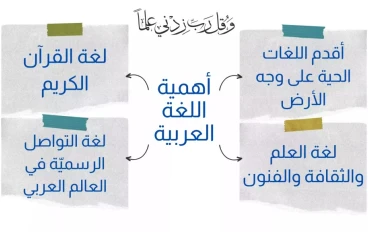
Learning the arabic language
Learning the Arabic Language: A Pathway to Cultural and Intellectual Enrichment
Arabic, one of the world’s oldest and most influential languages, has captivated linguists, scholars, and language enthusiasts for centuries. Spoken by over 400 million people globally and serving as the liturgical language of Islam, Arabic is not just a tool of communication but also a bridge to rich cultural, historical, and intellectual traditions. Learning Arabic may seem daunting due to its complexity, but the rewards it offers far outweigh the challenges. This article delves into the linguistic features of Arabic, the difficulties learners face, and strategies to master this intricate yet fascinating language.
Why Learn Arabic?
Arabic is more than a language; it is a gateway to understanding the vibrant cultures of the Arab world, spanning 22 countries across the Middle East and North Africa. Mastering Arabic opens doors to exploring classical Islamic texts, modern Arab literature, and a plethora of scientific and philosophical works that shaped human civilization. Moreover, with the increasing global importance of the Middle East in politics, business, and technology, Arabic proficiency can significantly enhance career opportunities in diplomacy, international relations, and commerce.
From an intellectual standpoint, Arabic is highly structured, emphasizing precision and eloquence. Studying it cultivates analytical thinking, improves cognitive flexibility, and enhances problem-solving skills. Furthermore, the language’s poetic nature and intricate grammar systems offer learners a profound appreciation of linguistic beauty.
The Unique Features of Arabic
Arabic stands apart from most other world languages due to its script, phonetics, and grammar. The Arabic alphabet comprises 28 letters, written from right to left, and employs a cursive script that varies depending on the position of the letter within a word. Its phonetic system includes sounds uncommon in many other languages, such as the emphatic consonants (e.g., "ṣ" and "ṭ") and the uvular "q."
One of the most remarkable aspects of Arabic is its root-based morphology. Most words derive from three-letter roots, allowing learners to recognize patterns and deduce meanings even when encountering unfamiliar vocabulary. For instance, the root "k-t-b" relates to writing, generating words like kitāb (book), kataba (he wrote), and maktab (office). This systematic structure can be both challenging and rewarding for learners.
Challenges in Learning Arabic
Learning Arabic is no small feat. Its grammar is notoriously complex, particularly the verb conjugation system and noun case endings. Verbs can take on various forms, tenses, and moods, requiring meticulous attention to detail. Additionally, Arabic is a diglossic language, meaning there is a significant difference between Modern Standard Arabic (MSA) and regional dialects. MSA is used in formal settings, media, and literature, while colloquial dialects are spoken in daily life and vary widely from country to country.
Another challenge lies in mastering the script. Arabic’s cursive nature, combined with the absence of short vowel markings in most texts, can make reading and writing difficult for beginners. Pronunciation, particularly for non-native speakers, also requires significant practice due to the language's unique sounds.
Strategies for Mastering Arabic
Despite its challenges, learning Arabic is entirely achievable with the right approach. Here are some effective strategies:
1. Start with the Basics: Begin by learning the Arabic alphabet, including how letters change shape depending on their position. Focus on pronunciation early to develop a strong phonetic foundation.
2. Understand the Difference Between MSA and Dialects: Decide whether you need MSA for formal communication or a specific dialect for conversational fluency. Many learners choose Egyptian or Levantine Arabic, as these dialects are widely understood.
3. Immerse Yourself in the Language: Surround yourself with Arabic through media, music, and films. Listening to native speakers helps improve comprehension and pronunciation while exposing you to cultural nuances.
4. Practice Regularly: Consistent practice is key. Engage in daily reading, writing, and speaking exercises. Use language-learning apps, online courses, and flashcards to reinforce vocabulary and grammar.
5. Seek a Language Partner or Tutor: Conversing with native speakers accelerates progress. Language exchange programs or professional tutors provide invaluable opportunities for real-world practice.
6. Leverage Resources: Use Arabic textbooks, grammar guides, and dictionaries. Supplement these with online platforms such as Duolingo, Rosetta Stone, and language forums.






























